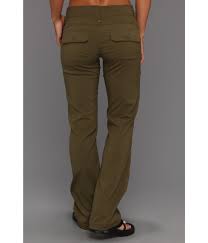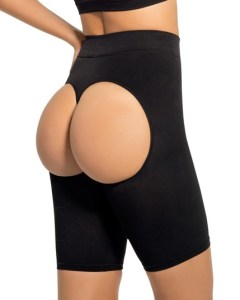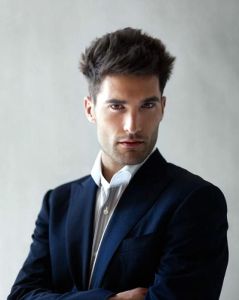 I work at an upscale outdoor store where we are highly trained in customer service not just because we want to sell really expensive stuff but because we genuinely like our customers and want to be helpful. And our typical customer likes us and what we sell, too, so often we have fun with each other.
I work at an upscale outdoor store where we are highly trained in customer service not just because we want to sell really expensive stuff but because we genuinely like our customers and want to be helpful. And our typical customer likes us and what we sell, too, so often we have fun with each other.
Like this one time, I was helping a very nice man customer, who was trying on a Patagonia Better Sweater that looked splendid on him. But he needed reassurance because he wasn’t sure what his absent wife would think. At such moments, men often turn to any woman, as if we are interchangeable, and as if anyone with two X chromosomes has good fashion sense.
A very nice woman customer happened to be shopping in the same area, and when he asked her what she thought, she said, “I’m not your wife, but I think you look very attractive.” Then he asked my opinion. “I’m not your wife and I’m also a lesbian, but I think you look totally hot,” I said. And we all laughed and felt good and the man went happily home with his Patagonia sweater. This is what customer interactions are like at my store.
Most of the time.
But every now and then, it’s not as easy. Customers come in hoping for the impossible: By some miracle of retail, you will help them look like they don’t.
It happened just yesterday. An overweight middle-aged woman, a little anxious but sweet-faced, needed a certain kind of pants. A very certain kind of pants.
“I need light-colored pants for the summer, to wear with white shirts,” she explained, eyeing me hopefully. “And they need to have a shorter inseam, because my legs are short. Or, they could be capris. But I don’t wear shorts because I don’t like my thighs.”
I gave her my best “No worries! We’ve got what you want!” smile and set about showing her the options. She didn’t like the khaki convertibles because once they are zipped off, they are shorts, which she doesn’t wear, though not zipped off, they are, well — from what I can see — pants. The black Columbia capris fit well, but she decided that she really preferred a full-length version, and — remember — in a light color. And — remember — short (which we in retail call “petite”). And the Prana roll-up pants would have been perfect, except for the rear snap-flap pockets which, she said, made her butt look big
Now there are apparently many women these days who actually want their butts to look humongous, which I discovered while researching this important psychosocial topic. They buy products like this …

…which appears to be a butt corset or butt push-up bra, or maybe just a torture device for women who aren’t uncomfortable enough in a thong.
But, I digress. Generally speaking, my store’s customers do not embrace the bigger butt movement, so I understood this particular woman correctly: Her idea of perfect pants would diminish her derriere, not make it look like over-sized backward-facing breasts.
This was a problem, because — objectively speaking — her butt was kind of big, and we in retail are required to be not overly honest. For instance, we are not allowed to say, “M’am, those pants are telling the truth.” Or, “‘M’am, in the interest of truth and justice, let’s acquit Prana and convict Big Mac.” We’re expected to overlook the obvious and embrace the customer’s yearning to look completely. like. someone. else. Even though we all know this is beyond the ability of clothing, which is not a plastic surgeon, but which is, actually, inanimate, and incapable of doing anything but covering your imperfect self.

I don’t mean to treat unkindly this common human desire to look other than we do, which is not limited to obese people. I experience it, too, when I am getting my hair cut. Because on the walls of my budget-cuts studio are large photos of impossibly good-looking young people with the kind of hair that would look fabulous if processed in a blender. And even if my Acme School of Beauty stylist could, actually, emulate the style the hair hottie is sporting, it would still frame my sagging middle-aged face.
Likewise buying glasses, which typically are modeled by people so good-looking that even the homeliest pair of spectacles — say chartreuse horn-rims with rhinestones and Coke-bottle lenses — cannot overcome their natural attractiveness. Ordinary people compensate with weak prescriptions, which allow us to not clearly see how we actually look.
Because here’s the thing, and the point at which this post turns serious: When we do see how we actually look, we often feel bad. About our big butt or our skinny one, our pimpled face or our wrinkled one, our underbite or overbite. Our under- or over- everything, our failure to meet the Goldilocks standard of beauty, to be just right. We find ourselves lacking in this aspect or that, and hope for a fix in the perfect pair of pants, or glasses, the right hair cut or skin treatment. We somehow conflate worth – not just our own, but often, the worth of others – with a narrowly tailored definition of physical attractiveness.
“It’s not surprising that we are fixated on looks,” writes sociologist Heather Laine Tally. “Our appearance can positively and negatively affect us. Beautiful individuals make more money, earn higher grades and are convicted at lower rates …
“(But) the solution to lookism isn’t working harder to better fit cultural ideals of attractiveness. Instead, we have to examine how we make appearance mean so much.”
And, perhaps, change the eyes with which we see, in a way that acknowledges the vulnerability embodied in each of our imperfect bodies, and the longing we all feel to nonetheless be seen as beautiful, just as we are.
I’ll let Shea Glover see us out with her beautiful video:



You are such a crazy great writer! I laughed HARD not even knowing “boob pants” existed, but then again my favorites are a pair of black unflattering Carharts.
LikeLike
Thanks, Chele; your appreciation is special to me. And, if I may say so, ALAR, the Carhartts are just fine on you. 🙂
LikeLike
thanks Cate
for the reminder
that we’re all beautiful
& underneath it all
we’re wearing the same thing 🙂
LikeLike
You’re welcome, David!
LikeLike
As a hairdresser, I’ve often dreamed of having a booth where I get to say: ‘Yes, thats acheivable’, or ‘Don’t waste your time’, or.. ‘it would be so much better if you just ‘…’ without the client feeling criticised. Oh the pain of being ineffective and not listened to. 🙂
LikeLike
So true. Thanks for reading and commenting!
LikeLiked by 1 person
So is it okay to say that I got a little teary eyed watching Shea’s video? The young lady that said she was going to “cut you” to Shea was the individual who needed to be told over and over again how much beauty she really possessed. Once again Miss Cate, you’ve opened our eyes.
LikeLike
You and I are kindred spirits, dear Debbie. The video has the same effect on me, and that young woman, in particular — that she cannot believe anyone would seriously think her beautiful. Sort of heartbreaking.
LikeLike
Love the insights Cate. Since I’ve basically dressed the same for the past 50 years I’ve seen myself go in and out of style several times. The blue collar hippie casual look is kinda timeless even if it’s sporadic. At least I survived (and avoided) polyester leisure suits and the 70s.
LikeLike
Not a small feat, Mike! Thanks for reading and commenting.
LikeLike
Soo true Cath! I always enjoy your writing.
LikeLike
One of my favorite readers! Thanks, Aunt Jude!
LikeLike
My solution to lookism is that I don’t. This, to me, is the great advantage of age – perspective. Since appearance is surely deceiving and limited in scope, I know better than to look at people through that lens. And wow, I wish big butts had been in when I cared – I would have been hip for the first time in my life.
LikeLike
Timing is everything. 🙂
LikeLiked by 1 person